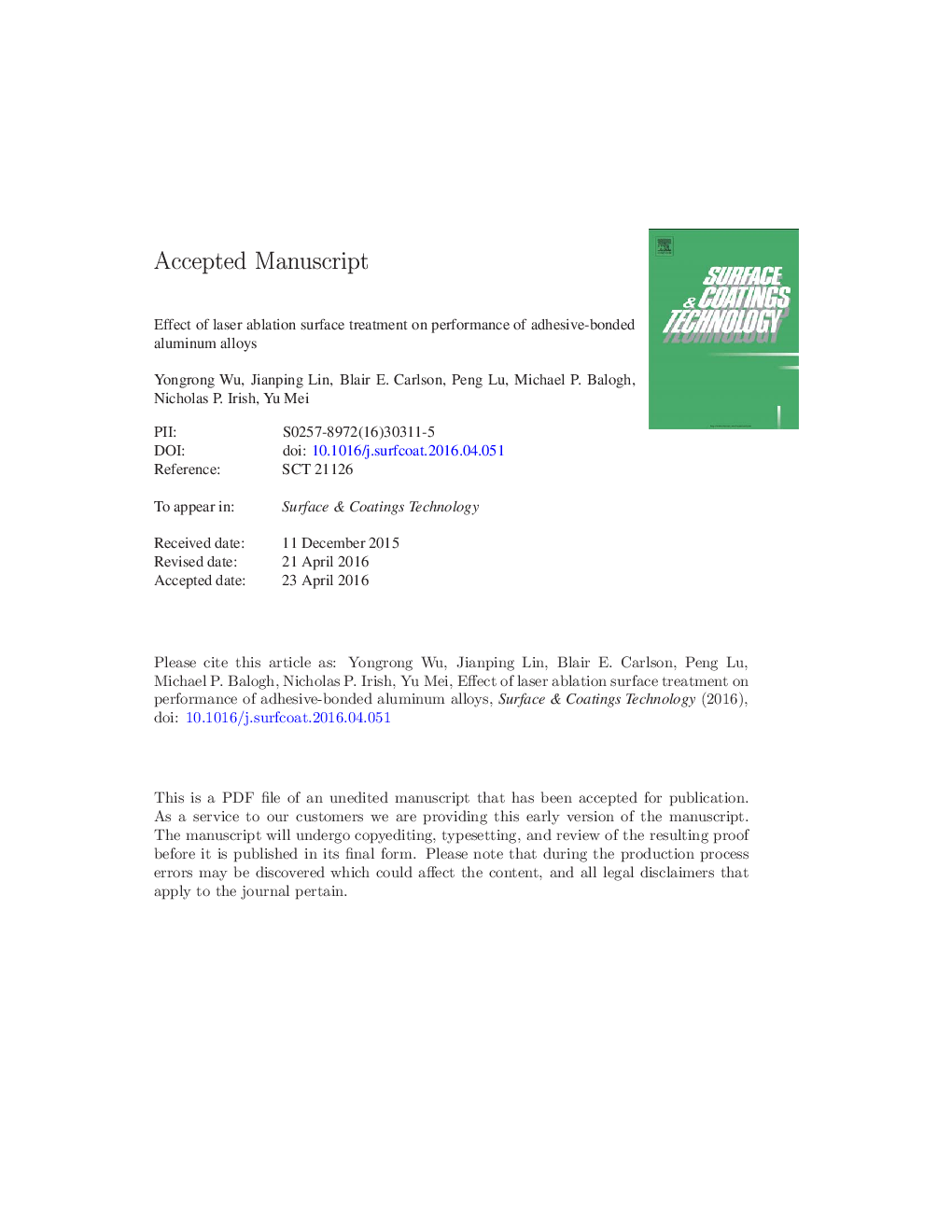| Article ID | Journal | Published Year | Pages | File Type |
|---|---|---|---|---|
| 8024991 | Surface and Coatings Technology | 2016 | 23 Pages |
Abstract
This study was conducted to investigate the effect of laser ablation surface treatment on the joint performance of AA6022-T4 2.0Â mm adhesively bonded to itself. It was found that laser ablation treatment at higher energy fluence (i.e., 19.01Â J/cm2) improved the joint strength by 25% versus untreated material as measured after water soak exposure. Furthermore, a greater proportion of fracture surface exhibited pure cohesive failure following laser ablation treatment. Results revealed that while laser ablation treatment at lower energy fluence had little influence on the surface topography (though it did act to remove any sheet metal lubricant or other contaminants), treatment at higher energy fluence increased both surface roughness and surface area. This is considered a contributing factor to the improved adhesive bond performance. However, the higher energy fluence were also found to modify the surface chemistry and created a more uniform and thicker aluminum oxide layer, which was likely to be another contributing factor to the improved bond performance. Additionally, the effect of aging (up to 6Â weeks) in ambient conditions of laser ablated aluminum on adhesive bonding performance appeared to have no statistical influence.
Related Topics
Physical Sciences and Engineering
Materials Science
Nanotechnology
Authors
Yongrong Wu, Jianping Lin, Blair E. Carlson, Peng Lu, Michael P. Balogh, Nicholas P. Irish, Yu Mei,
